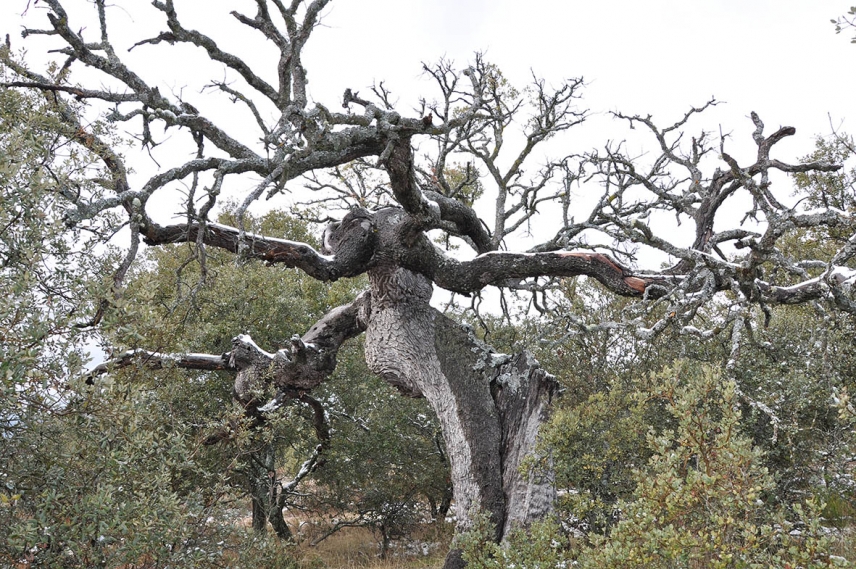
Holm oaks infected with Phytophthora cinnamomi growing in conditions without water stress (optimal watering), respond to the pathogen physiologically with strategies of reducing biomass and reallocating resources. That is to say, as a defense mechanism, the plant with infected roots activates its secondary metabolism and stops its growth, but other parameters, such as photosynthetic efficiency, are not affected. Thanks to these mechanisms, this group of plants was able to cope with the disease, and in doing so, avoid irreversible root damage and recover after the first cycle of infection.
However, the response is drastically different when the infection comes on top of water stress due to drought. In this case, photosynthesis decreases and the plant is unable to respond to the infection, and even die from it. In this way, the study demonstrates the influence of water stress as a trigger for Holm oak decline that when added to the pathogen, exemplifies the worst case scenario for dehesa oak groves.
The most innovative aspect of this study is the combined assessment of the physiological and growth responses in plants under biotic and abiotic water stress, considering the issues derived from the Holm oak’s natural variability. By using only one population in the study, and seedlings from the same parental tree, the variability in the response is reduced, thus strengthening the study’s results.
As extreme drought is becoming more and more common in Andalusia, the results of this research indicate that not only must the pathogen be dealt with but that managing strategies must be incorporated in order to stop the pathogen from spreading and to reduce the impact of climate change and severe droughts upon Holm oaks, by improving its own defense mechanisms when facing root rot.
Ruiz Gómez, FJ; Pérez-de-Luque, A; Sánchez-Cuesta, R; Quero, JL; Navarro-Cerrillo, RM (2018) Differences in the Response to Acute Drought and Phytophthora cinnamomi Rands Infection in Quercus ilex L. Seedlings. Forests, 9, 634; doi:10.3390/f9100634


